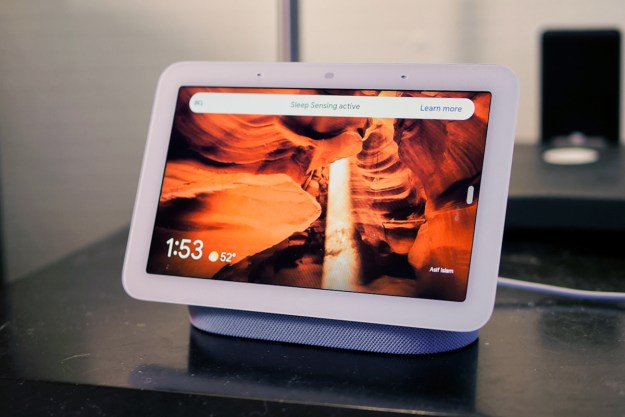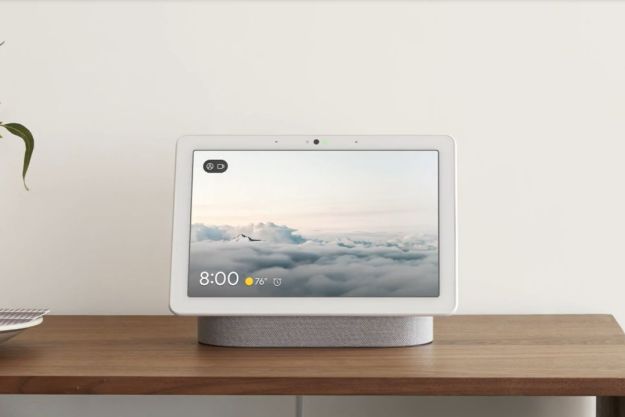Smart-home-device makers are becoming separated into two categories: the early pioneers and those playing catch-up. We’re seeing a lot of the latter at CES 2015, but even those entering the market now are still have a shot at getting settled on the ground floor of the smart home hub phenomenon. Plus, they have a benefit of a bit of hindsight, thanks to those that came before them.
Oomi is one company that’s making its debut at CES 2015, with its Starter Kit. What it seems to have learned from its predecessors is that we’re quickly approaching the time when consumers might not want to put their smart home together piece by piece but in one fell swoop. Also, simplicity is golden.
The kit comes with a Cube (the hub), a tablet, and a wearable device. All that gear might make it attractive to someone starting from scratch when it comes to smart-home tech, and the company clearly wants to try to connect everything in your home. It also provides additional devices that stream video to your TV, monitor humidity levels, and light your home.
The included tablet isn’t just any tablet. It powers Oomi’s most attractive feature: tap-and-touch. Instead of syncing with Bluetooth or linking everything up on Wi-Fi, users simply ferry the tablet around, tapping compatible devices like it’s an oddly shaped fairy wand. Of course, the drawback is that this is one more piece of hardware that could break or get lost. Presumably a smartphone app could still control devices if such a disaster occurred, since Oomi says it wants its system to be compatible with Apple Home Kit and wearables such as the Apple Watch and Android Wear.
Oomi is planning on marketing the system in the U.S., U.K., Australia, and especially China’s, because the country’s “culture of elderly family members living with their children and grandchildren makes it unique to the Internet of Things and home automation space,” according to the press release. Making a connected home just a few taps away might make sense for those generations who haven’t been typing on a keyboard practically since birth.
Oomi is currently running an Indiegogo campaign, where you can buy the system for $199. The expected retail price for the basic kit is $399.
Editors' Recommendations
- Ring Pan-Tilt Indoor Cam vs. Ring Stick Up Cam Pro: Which is better for your home?
- SimpliSafe is now using AI to prevent burglars from entering your home
- Home Depot’s Hubspace is a great way to start building your smart home
- Echo Hub vs. Echo Show 8: Which is the best option for your smart home?
- What is IFTTT and how can you use it in your smart home?


